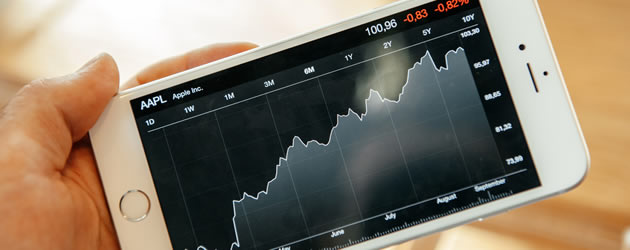
iPhone 6 – Bendy, but Boosting Australia’s Economy
The iPhone 6/6 Plus is perhaps the most controversial Apple product to date, with the gadget experiencing a barrage of criticism on the basis of its bendy body, 4.7 inch screen and iSO update issues, but the latest reports have shown that the gadget could actually be helping to increase economic growth.
Before we explore the impact of the iPhone 6 on the economic performance of nations like Australia, we’ll take a look at a couple of the most hotly-discussed issues affecting the smartphone since its launch earlier this year.
Does the iPhone 6 Bend?
Various investigations have since seen industry experts comment that the level of concern over the iPhone’s structural integrity is excessive. After concluding a range of tests, which saw the iPhone come up against a 55lb weight, Electronics Editor Glenn Derene noted; ‘While not the strongest of smartphones on the market, fears of a serious structural design flaw in the iPhone 6 and 6 plus seem over blown.’
Apple also came out and asserted that only nine users had complained about their iPhones (although a video compilation shows over 300 of the handsets having a Uri Geller moment).
iPhone 6 Screen too Big?
While Samsung smartphones have often had larger screens, for years Apple stubbornly stuck with what they deemed to be the ‘optimum’ size of 3.5 inches.
According to Apple, the screen size deployed in the iPhone 3, 4 and 5 was the greatest combination of functionality and usability.
However, extensive market research led to them questioning this ethos, and it seems the enlarged screen of the iPhone 6 and 6 Plus is going down well with consumers. Although some have complained that it is difficult to type on the new iPhone one handed, and others have pointed out that Apple had to re-gig the resolution to make it work, most are welcoming the evolution.
iPhone 6 Sales
Over the iPhone 6 and 6 Plus’ three day launch weekend, beginning September 19th, Apple reported selling 10 million units – a record for the company.
The phone initially went on sale in the UK, US, Canada, France, Germany, Australia, Hong Kong, Japan, Singapore and Puerto Rico. Apple was unable to sell the product in China due to extensive regulations.
Although the pace of sales have since slowed (and the iPhone has come up against competition in the form of the Samsung Galaxy Note 4) the iPhone is now on sale in China and India and looks set to dominate the smartphone market for some time to come.
Australian Retail Sales Surge thanks to iPhone 6 Demand
The popularity of the iPhone might be helping to line Apple’s pockets, but the latest figures show it’s also having a positive impact on the economic prospects of nations like Australia.
The South Pacific nation released its retail sales figures for September during the Australasian session and investors were pleasantly surprised by the report.
While sales growth of just 0.3% on the month had been expected to follow August’s 0.1% sales gain, Australian retail sales actually surged by 1.2%.
On the year retail sales were up 5.7% in September.
In a statement issued by the Australian Bureau of Statistics (ABS) it was noted; ‘In seasonally adjusted terms, the largest contributor to the rise was household goods retailing (4.1%), where electrical and electronic goods retailing recorded growth (9.2%). The figure was influenced by the release of the iPhone 6 during the month. The increase in electrical and electronic goods retailing represents about half of the total Australian sales movement of 1.2% in seasonally adjusted terms.’
Similarly, James Glynn of the Wall Street Journal also observed; ‘It is a rare bit of good news for Australia’s economy, which until recently was thriving on Chinas’ demand for commodity exports. As China’s economy has cooled, Australia’s mining sector has shed jobs and investment has cratered.’
As retail sales forms part of the services sector, which accounts for over 65% of total Australian growth, this month’s iPhone 6 inspired sales gain could be good news for the Australian economy as a whole.
A similar upswing in retail sales may be recorded in other nations which witnessed high demand for the gadget, so the iPhone’s popularity could prove to be beneficial to economic growth on a global scale.
Australian Dollar (AUD) Exchange Rate Rallies on iPhone 6 Led Sales Gain
The Australian Dollar (AUD) exchange rate had been struggling prior to the release of the sales report.
On Monday disappointing Chinese manufacturing and non-manufacturing figures undermined demand for the South Pacific asset, as did a concerning drop in the number of Australian building approvals.
However, the Australian Dollar to US Dollar (AUD/USD) and Australian Dollar to Pound Sterling (AUD/GBP) exchange rates were able to bounce back thanks to the impressive retail sales surge.
The Australian Dollar continued to trend higher after the Reserve Bank of Australia issued its interest rate announcement.
According to industry expert Derek Mumford; ‘People were going into the announcement a little short of Aussie dollars on speculation that the RBA could be a little bit more dovish. It’s pretty much the standard comments, and there’s no real change and they had to cover their short positions.’
The iPhone 6 not only helped boost Australian retail sales but saw the Australian Dollar to US Dollar (AUD/USD) exchange rate achieve a high of 0.8714.
The Australian Dollar went on to plummet as the week continued however as commodity prices slumped. A soft AiG Performance of Services Index also kept the Australian Dollar under pressure. Even with iPhone 6 sales driving consumer spending, the Australian services sector fell further into contraction territory in October.

